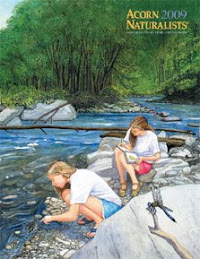
Returning to my childhood home inTexas, I find myself looking out over the plains wistfully. I remember being on vacation as a child traveling the highways of Texas, it got pretty monotonous. Mile after mile, there was nothing but flat country. You could see all the way to the horizon without a single tree in sight. It seemed to go on forever.
Now those wide open vistas are getting rarer. Motels, restaurants, shopping malls, and housing developments are standing in the place where space used to be. That's sad. I now see that open space with new eyes. Hope it's not too late.
In my research to learn more about the Texas prairie, I discovered an organization to save it called The Great Plains Restoration Council. I found out that "The Fort Worth Prairie ecosystem is a subset of the once famous Southern Tallgrass Prairie. Tallgrass Prairie in general is the most endangered major ecosystem in North America. The Fort Worth Prairie, with perhaps 30,000 scattered acres remaining (was originally 1.3 million acres stretching from just south of the Red River down to Johnson County) is considered G1/G2 (Globally Imperiled)." Not surprisingly, these are endangered lands.
I also discovered that there are several universities in the area who are using this land as an outdoor classroom. This gives me hope and lends some assurance that being outside, learning from nature, is a way for students to become more knowledgeable through hands-on and authentic experiences. In my work with elementary school children in the outdoor classroom, it is my hope that they will both learn and come to love these wide open spaces. Wouldn't it be a shame if years from now when they are on vacation as I am, traveling across Texas, they find themselves saddened by the disappearance of the prairie? They'll turn and say, remember when it seemed to go on forever...
 This week I am attending the Michelson ExxonMobil Teachers Academy in Jersey City, New Jersey. We will be attending classes at the Liberty Science Center. According to Phil Mickelson, our benefactor, "The Academy is an opportunity for teachers to share best practices with colleagues and pick up tools to positively impact the science and math education students receive."
This week I am attending the Michelson ExxonMobil Teachers Academy in Jersey City, New Jersey. We will be attending classes at the Liberty Science Center. According to Phil Mickelson, our benefactor, "The Academy is an opportunity for teachers to share best practices with colleagues and pick up tools to positively impact the science and math education students receive."








